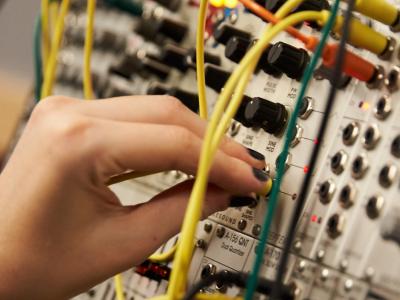What does a Studio Designer do?
While a home studio can be as simple as a computer, an audio interface, and a microphone set up in a bedroom corner, creating a professional-level recording studio requires the expertise of a studio designer. In addition to drawing up designs for new studio spaces, studio designers perform a number of related tasks, including:
- Modifying the size, shape, proportions, and materials of existing spaces to improve the acoustic environment
- Solving problems related to a room's dimensions, sound absorption and separation, and frequency management
- Outfitting spaces with features such as floating doors, double walls, and extra ceilings
- Creating separate functional spaces like control rooms, live rooms, and isolation/vocal booths
Although the rise of the inexpensive home studio has affected the market, good design remains critical to the artistic and financial success of a professional recording studio, ensuring continued demand for the best in the field. The best studio designers do much more than simply build recording studios; being a studio designer means balancing two equally important goals: to create a musically accurate recording and monitoring environment, and to provide a space for musicians that feels natural and enhances creativity. The ultimate goal is an aesthetic design that improves functionality.
At a Glance
In school, studio designers may study production, recording, architecture, or acoustical science. Advanced degrees may be necessary for breaking into this profession, but a highly regarded body of work and strong references will do far more to generate work. Many studio designers have previous experience as engineers, producers, or musicians, and break into the field as apprentices or assistants to an established studio designer. Many also begin as acoustical consultants, a field with significant crossover.
Studio designers, like all independent contractors, benefit greatly from a network of industry contacts and a large pool of returning customers, including studio owners, producers, composers, and musicians. Most enter the field with pre-existing connections from prior work in the studio.
With the rise of digital technology, the number of professional studios—and the amount of high-end work for studio designers—saw a dip. However, now that many professionals are working out of home studios, they require professional-grade studio design services, creating new opportunities for studio designers.
- Architecture
- Design
- Acoustics
- Audio recording
- Time management
- Verbal communication
- Budgeting
Studio designers pay attention to detail and nuance with a rigor bordering on obsession. They tend to be exceptionally focused and precise, which is a prerequisite for the creation of a perfectly calibrated acoustical environment. Of course, good communication skills and patience come in handy when dealing with clients.
As freelancers, studio designers control their schedules, which typically adhere to standard business hours. Studio designers spend the majority of their time at the drafting table, working on new designs, but this time punctuated by visits to and from clients, and the installation of new acoustical elements.










